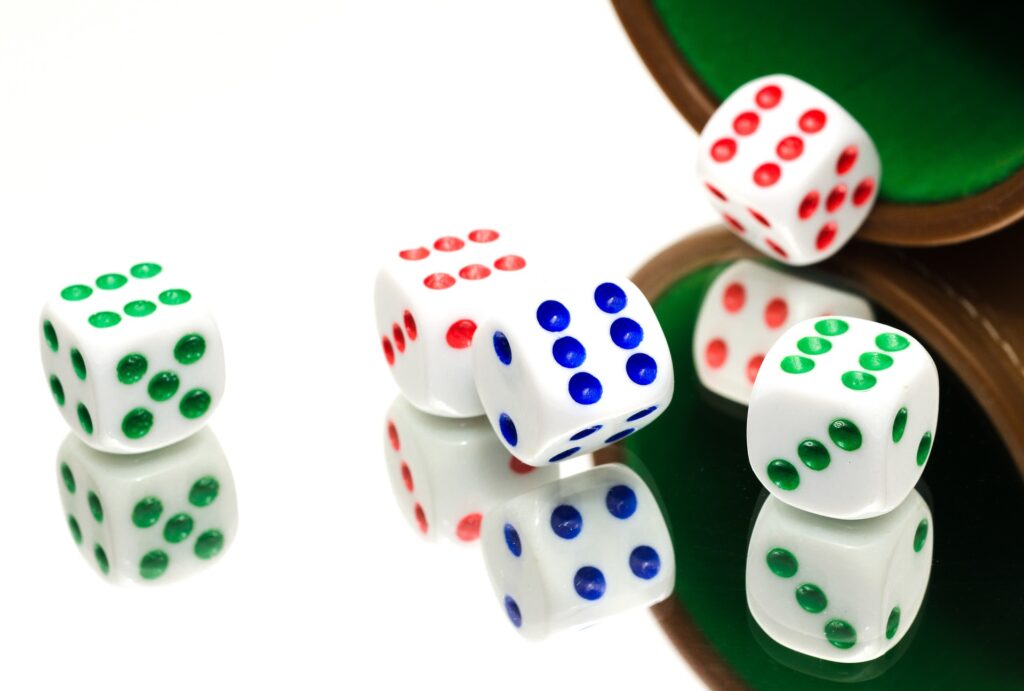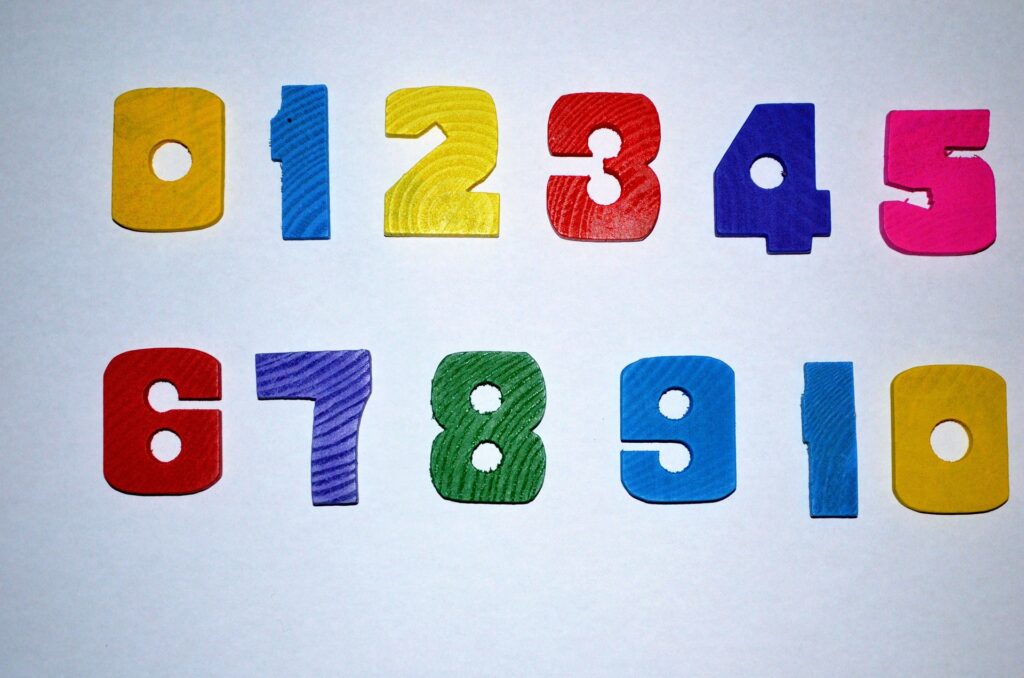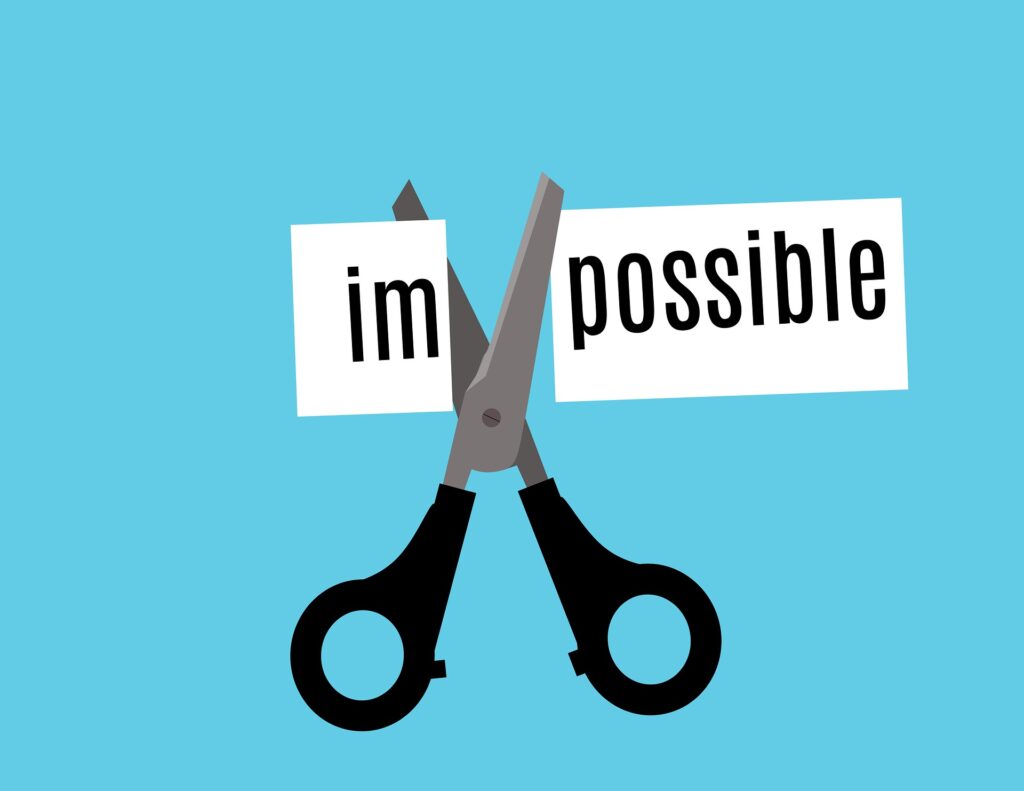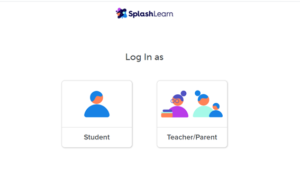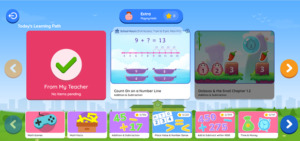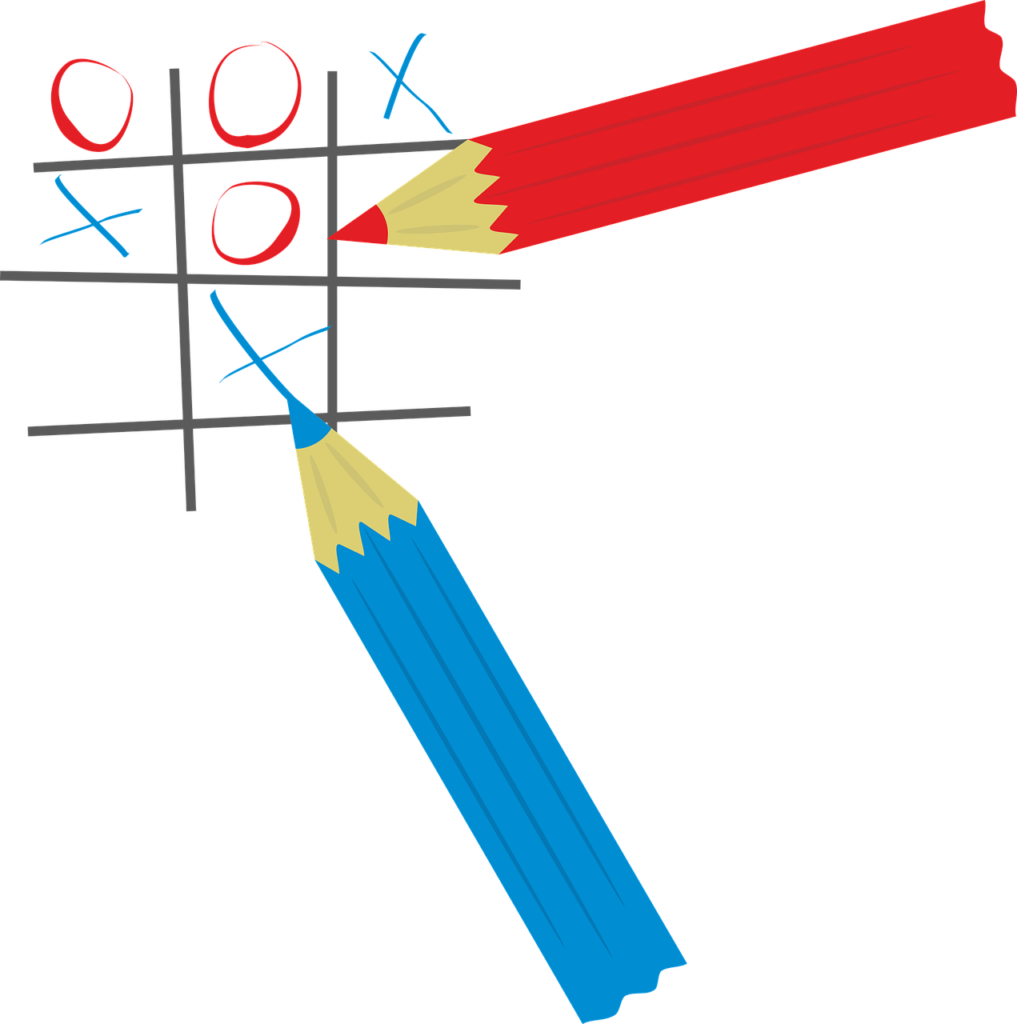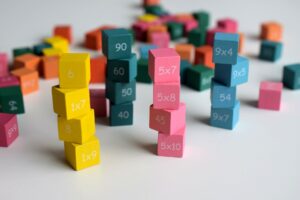
https://www.boxcarsandoneeyedjacks.com/product-category/math/
Okay, let me tell you about an AMAZING resource called Box Cars and One Eyed Jacks created by Jane Felling and John Felling. Last year, before COVID-19 my colleague and I went to a workshop called Box Cars and One Eyed Jacks. This workshop was the most high energy and exciting workshop I have been to. I have never been more engaged with math and learning how to teach it. The whole concept revolves around games and how to reinforce concepts through playing games with dice, cards and dice shakers.
Dice Trays:
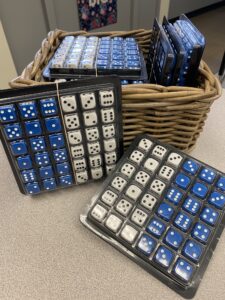
Here is how I store my dice trays.
The first thing we were introduced to was these 36 dice trays. These dice trays allow for two different coloured dice to be used within the same game. Using these trays alone allowed for 40 different games between grades K-3. First of all, I loved how there were two different coloured dice options which allows for students to compromise between who got the blue and white dice. Second of all, I loved that these trays kept the dice easily contained and organized. As an elementary teacher, keeping things organized is one of the most important things in terms of being able to have a effective classroom. Third of all, because their are two sides to the trays (top and bottom part), this allows for students to have their own tray part if they have trouble sharing. I use this wicker basket I had to store the dice trays in. I also use rubbers bands to keep the dice trays together, although it was suggested to use to use hair ties which I may be investing in soon.
Here is the link to purchase the dice trays and rolling into math game book.
https://www.boxcarsandoneeyedjacks.com/product/rolling-into-math-with-dice-tray/
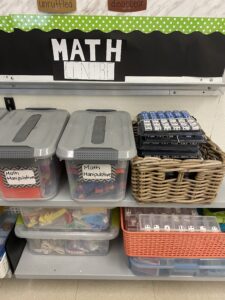
Storage:
In my classroom I have designated a specific part of a shelf where math tools are placed. Here you see the trays, my math manipulative kits and extra tools. Tools include playing cards, base ten blocks, dice trays and extra dice. At the beginning of the year my students and I review how to use this space appropriately, when we use this space and what it should look like when they have finished with their tools. In order to create the sign, all I did was cut out black card stock and glued white cut out letters on top. I like having this section labelled as is allows for students to have a visual reminder of where things are and continues to expose them to words. You could also use pictures for younger students. In my class we always explicitly talk about where everything is at the beginning of the year and then practice using these spaces. In doing this, we create independence so that students are able to get what they need without needing to ask.
Rolling into Math Games Book:
The dice trays correlate to a book called Rolling into Math and this book is hands down fantastic. The first thing you will notice about the book is that is breaks down every game into level, skills, players, equipment, goal, getting started, math journal and extensions. These categories make it so easy to pick out a game that will work for any of your students. Often times in classrooms there is a large variety of students with a large variety of skill sets. Within a classroom you can have students who are still working on basic building blocks of or math, students who are working at the expected level of math for their grade and even student who are working well beyond their expected level. These games progress in levels so that you can use the same game and provide different variations to match the game level to the goal of the student. So if you have a student who is still building basic math skills then you can give them the same game as those who’ve progressed farther but it is more appropriate for the skills they are working on. This variation of levels makes it easy to prep these games for your entire class. Also, these books are so easy to understand that even if you have never played the game before the instructions make it easy to explain and provides pictures for further understanding. When you purchase the book there are printable in there which make it so easy to pick a game based on a skill, photocopy the master, explain and distribute to your students. When I print copies for my students to play with, I use coloured card stock. This isn’t necessary but I find that when I print it in colour it helps me to differentiate between the games in my master bin so I am reusing the same games year after year instead of reprinting them each year. I also like using card stock because it makes the games more durable which make them last longer. I use whiteboard inserts for my students to place the game boards into, again making them reusable. You can find the rolling into math book here: https://www.boxcarsandoneeyedjacks.com/product/rolling-into-math-with-dice-tray/
Rolling into Math – with dice tray
